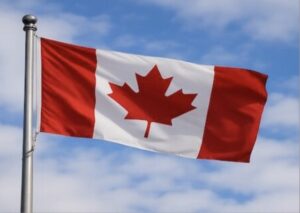Account Minister Chrystia Freeland has set out the Government of Canada’s arrangements to promote financial development and job growth in the wake of the Covid pandemic.
In view of COVID-19, the 2020 rendition of this update is of added value. After a massive downturn in monetary action and jobs at the onset of the pandemic, Canada began to enjoy recovery over the mid-year months.
In either event, the amount of Covid’s case has risen at the relevant pace as of late, leading to a new round of lockdowns in specific areas of the country, for example, in Toronto. Recently, the Canadian Account Division said that the country will run a deficit of more than $340 billion to support the economy after the Covid pandemic. In the latest report, the division updated this number to more than $381 billion.
Canada has established an array of excellent steps to support the economy and occupations through 2020 as it aims to minimize the damage caused by the pandemic. These measures include the Canada Emergency Response Benefit (CERB), which was paid to workers affected by COVID-19, as well as measures such as leasing and reimbursement to support companies. Get a free evaluation of Canadian migration.
The latest Fall Economic Statement states that COVID-19 has substantially reduced the perpetual and transitory appearance of inhabitants to Canada. It goes on to state that Canada’s population growth will slip to around 1% this year, compared to 1.4% in 2018 and 2019. More insecure levels of migration damage Canada’s labor force and monetary growth.
To underscore the importance of movement for Canada’s economy, the Statement states that migration has sustained half of the country’s usual GDP growth in 2016 and 2019.
Canada is now drawing up the post-COVID-19 movement designs so that it can use the skills and gifts of immigrants after the pandemic to help rebound from financial changes and occupations. In late-October, Canada’s migration is served by Marco Mendicino’s postponement of the most advanced movement initiative in Canadian history. Under the Immigration Level Plan 2021-2023, Canada expects to accept The present Declaration draws attention to the fact that the national government will provide Immigration, Refugees and Citizenship Canada (IRCC) with $72 million to modernize its Global Case Management Scheme to an advanced stage and away from the “current awkward paper-based framework.” The motive behind this speculation is to “add to Canada’s elite migration framework through improved customer administration, operational proficiency, and program honesty, guaranteeing a more elevated level of administration and inner ability to bring the aptitudes and gifts of new Canadians to our networks.”
Another significant aspect of Canada’s Immigration Level Programme is the expansion of the number of talented professionals invited under Express Entry. Lately, IRCC has held the highest ever Express Entry draws, offering 5,000 perpetual home requests with each draw. In the coming days, the IRCC will hold an Express Entry draw for the third continuous week.
Express Entry is one of five big Canadian movement stories to watch in 2020. more than 400,000 new permanent residents next year.






















